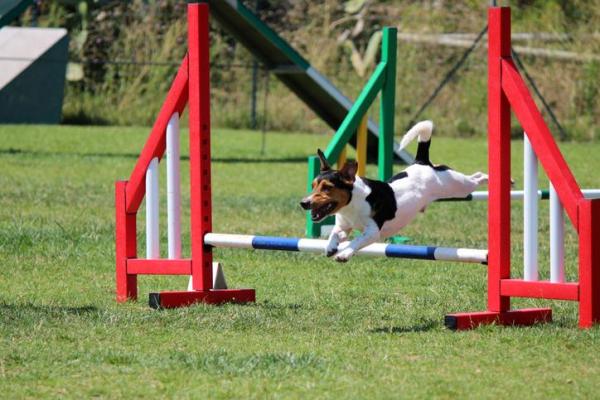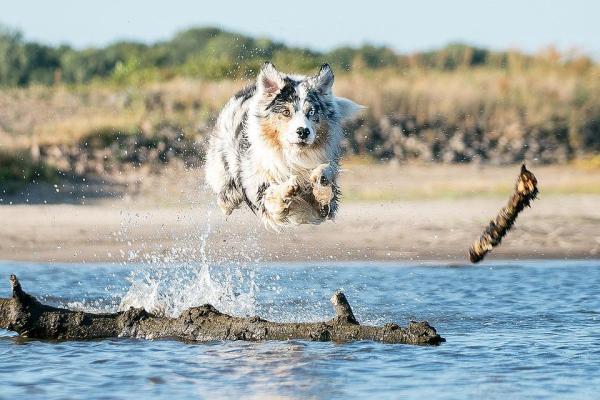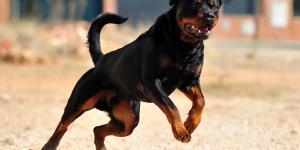How Much Exercise Is Enough for My Dog?



See files for Dogs
Physical activity is a crucial component of a dog's overall well-being. Regular exercise helps maintain a healthy weight, promotes strong muscles and joints, and provides mental stimulation, all contributing to a happy and healthy dog. Without adequate exercise, dogs can become overweight or obese, leading to potential health issues like diabetes and joint problems. However, determining the right amount and type of exercise for your dog can be complex.
The following AnimalWised article explains how much exercise your dog needs, based on factors like age and breed. We'll explore everything from crafting a personalized walking routine to engaging activities that keep your pup mentally sharp and physically stimulated.
How does exercise benefit a dog?
Regular moderate physical exercise is essential for preventing overweight in dogs and reducing the risk of related health issues such as diabetes, heart disease, and joint problems.
Consistent exercise helps develop strong muscle tone, fortify bones, and enhance the thickness of articular cartilage, promoting overall joint health. Additionally, it strengthens the heart, improves circulation, and stimulates the digestive system, leading to better overall health and reducing the risk of constipation.
Mental stimulation through activities using positive reinforcement is equally important. These activities keep dogs' cognitive and social skills sharp while strengthening the bond between pet and owner. Physical activity releases endorphins, which can boost a dog's mood, reduce anxiety, and promote a sense of calmness. This is particularly beneficial for dogs with behavioral issues such as anxiety, depression, or destructive tendencies, as exercise and mental stimulation help alleviate accumulated stress and improve overall behavior.
Exercise also aids in socialization by exposing dogs to other dogs and people, teaching them appropriate interaction skills. This exposure builds confidence and helps dogs feel more comfortable in various situations, reducing fearfulness and aggression. Overall, regular physical and mental activity significantly enhances a dog's well-being and quality of life.
Did you know that walking your dog benefits both your dog and you? Be sure to read this other article to learn about 10 benefits of walking your dog.

How much should a dog walk a day?
Before delving into physical exercise, it's important to understand a dog's walking needs, as both activities are closely related. The amount of exercise a dog requires daily depends on different factors such as breed, age, and health.
Age is an important factor because puppies tend to be full of energy, however, they require shorter bursts of exercise throughout the day to avoid strain on their developing growth plates. Senior dogs, on the other hand, may also need less strenuous activity. Dogs with health issues should have their exercise routines adjusted based on their veterinarian's recommendations.
Finally, different breeds have varying energy levels. Here are some general guidelines on how much much should a dog walk a day depending on the breed:
- High-energy breeds: such as Border Collies Labrador Retrievers, 1-2 hours of exercise per day, ideally split into multiple walks, playtime, and training sessions.
- Medium-energy breeds: such as Beagles and Spaniels, 1-1.5 hours of exercise per day, including walks, playtime, and mental stimulation.
- Low-energy breeds: such as Pugs, and Shih Tzus, 30-60 minutes of exercise per day, with shorter walks and playtime sessions.
During walks, it's crucial to allow the dog to relieve itself, sniff around, and interact with its surroundings.
Make sure to read this other article that explains the best time of the day to walk your dog.
How much physical activity does a dog need?
As mentioned earlier, the duration and type of physical activity should vary greatly depending on the age and breed of the dog.
Exercise for puppies should be moderate and limited to walking and playing, as excessive activity can negatively affect their physical development. Dogs can start more structured exercise routines around 12 months old, once they are fully developed. This should be done gradually to avoid negatively impacting their bones and joints, especially in large or giant breeds.
A dog's overall health status plays a crucial role in determining their exercise needs. If your dog has any underlying health conditions, or is a brachycephalic breed such as a Bulldog or Pug, consult with your veterinarian to tailor an appropriate exercise plan that accommodates their limitations and promotes their well-being.
While some breeds are naturally more active, it's important to focus on the specific needs of each individual dog. Here are five steps to better understand and meet your dog's exercise needs:
- Start with short exercise sessions: Just like humans, dogs need to gradually build up their endurance. Beginning with short exercise sessions, around 15-20 minutes for younger or less active dogs, allows them to adapt without fatigue.
- Practice different activities to discover your dog's preferences. Some dogs might prefer sniffing and exploring new environments, while other prefer fetching or playing with a ball.
- Combine exercise with mental stimulation to tire your dog out both physically and mentally. Activities like puzzle toys that require problem-solving or scent work that utilizes their natural tracking instincts not only tire them out physically but also engage their minds, preventing boredom and potential destructive behaviors.
- Avoid games that lead to excessive barking, jumping, or hyperactivity, as they can cause anxiety.
- Allow at least one rest day per week. Just like humans, dogs need rest days to recover from exercise and rebuild their energy reserves. Allowing at least one rest day per week, or incorporating shorter, low-impact activities on those days, prevents overexertion and potential injuries.
Quality over quantity is key when it comes to dog exercise. Engaging walks with sniffing opportunities, playtime, and training are more beneficial than just a long, forced walk.

Helpful dog exercise tips
Here are some tips to ensure your dog's exercise sessions are carried out correctly:
- Exercise sessions should always be conducted in an environment that promotes well-being. Avoid playing sports during the hottest hours of the day or on unsuitable surfaces, such as hot asphalt in summer, as these can cause injuries and burns to your dog's paws.
- Make sure your dog has access to fresh, clean water before, during, and after exercise, especially on hot days.
- Similar to humans, dogs benefit from a warm-up before engaging in strenuous activity. A brief, 5-minute walk helps loosen their muscles and prepares them for exercise.
- Start with short sessions, approximately 10 minutes long, to help your dog adjust to regular physical activity. Gradually increase the duration based on your dog's comfort and tolerance level.
- Take breaks periodically to allow your dog to rest and breathe calmly, providing a shaded area during these breaks. If you're on a track or circuit, you can step aside, walk around, and then resume.
- It's also beneficial to incorporate a variety of activities to keep your dog engaged and prevent boredom. This might include brisk walks that allow for sniffing and exploration, which are mentally stimulating for dogs, or playing fetch to tap into their natural prey drive and keep them active.
- Using positive reinforcement techniques like praise and treats can make exercise sessions enjoyable and motivating for your dog.
- After intense activity, a leisurely walk helps your dog's heart rate and breathing gradually return to normal.
Exercising your dog during peak summer heat can increase their risk of heatstroke. This other article dives deep into the condition, prevention tips, and how to recognize early signs.
Different ways to exercise your dog
Now that you know how to assess your dog's needs, explore these beneficial dog activities to create a personalized exercise routine:
- Jogging: running at a steady pace is ideal for high-energy adult dogs. It's beneficial when combined with mental stimulation exercises.
- Canicross: this professional form of jogging with dogs is popular in mountainous environments and includes regional, national, and international championships.
- Bicycling: similar to jogging, biking provides great exercise but requires initial training for basic commands. You can attach your dog to your bike using a special leash designed for cycling. This allows them to run alongside you as you cycle, providing them with exercise. This requires a well-trained dog comfortable running beside a bike at a steady pace.
- Fetch or Frisbee: before engaging in these activities, ensure your dog understands how to retrieve and bring back the toy. Select a toy appropriate for your dog's size and chewing habits. Tennis balls are popular, but consider softer options for puppies or dogs with sensitive teeth. Plush toys are great for indoor fetch, while brightly colored balls are easier to see outdoors. Also, choose a frisbee designed for dog play. These are softer and less aerodynamic than human frisbees, making them easier for dogs to catch and preventing injury.
- Swimming: offers complete exercise and mental stimulation in a stimulating environment for dogs. However, keep in mind that not all dogs are natural swimmers though, so a gradual and positive introduction is key. Invest in a properly fitted life jacket for your dog. This provides buoyancy and keeps their head above water, especially important for beginners or dogs unfamiliar with water.
- Obedience trials: competing in obedience trials requires dedication and training, but it can be a rewarding experience for both you and your dog. It strengthens your bond, provides mental stimulation, and allows you to showcase your dog's obedience skills.
- Hiking: this is a relaxing and mentally stimulating activity suitable for dogs less interested in high-intensity sports. Invest in a comfortable harness for your dog, with a leash appropriate for the terrain. Consider the type of terrain. Rocky paths might require paw protection, while hot, sandy trails are best avoided during peak heat. Shady forested trails are ideal for hot weather.
Is running up and down stairs good for dogs?
Stair running for dogs is a double-edged sword. While it can build muscle and improve range of motion in young, healthy dogs, it can strain joints in large breeds, seniors, or those with existing issues.
Remember, mental stimulation is just as important as physical stimulation for your dog's well-being. Learn more about keeping your dog mentally sharp with engaging games in this other article.

If you want to read similar articles to How Much Exercise Is Enough for My Dog?, we recommend you visit our Sports category.
- Kiviranta, Ilkka, et al. "Moderate running exercise increases glycosaminoglycans and thickness of articular cartilage in the knee joint of young beagle dogs." Journal of Orthopedic Research 6.2 (1988): 188-195.








